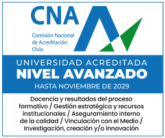The increasing demand for portable electronic devices and batteries has led to a growing interest in Li compounds. Lithium manganese oxides (LMO) are the most popular lithium-ion sieves (LIS) precursor materials due to their high lithium adsorption capacity and selectivity. The key step in forming LIS is the lithium desorption process from the crystalline lattice of the LMO. However, this process has been less researched than its counterpart, the lithium adsorption process. In this line, there are some studies describing the process of lithium desorption in acid media from spinel-type LMO. Nevertheless, there is no evidence of the lithium desorption process of layered-type lithium-rich LMO in acidic media. In the present work, we investigated the lithium desorption behavior of different LMO nanocomposites in HCl. LMOs with different Li/Mn ratios were synthesized by promoting the lithium-rich layered phase (Li2MnO3). The morphology, size, crystallinity, chemical composition, and surface properties of LMO nanocomposites and delithiated products were studied. In addition, density functional theory (DFT) calculations were carried out to understand the differential lithium desorption behavior, confirming its dependence on the Li/Mn ratio of the LMO nanocomposites. Herein, we demonstrate that the lithium diffusion energy barrier plays a major role during lithium desorption from LMO nanocomposites. Our results suggest that an exhaustive characterization of lithium precursor materials (LMO) is necessary to select a suitable desorption process.
Keywords: Lithium desorptionLithium manganese oxideLi2MnO3Lithium ion-sievesDensity functional theoryNudged elastic band.



